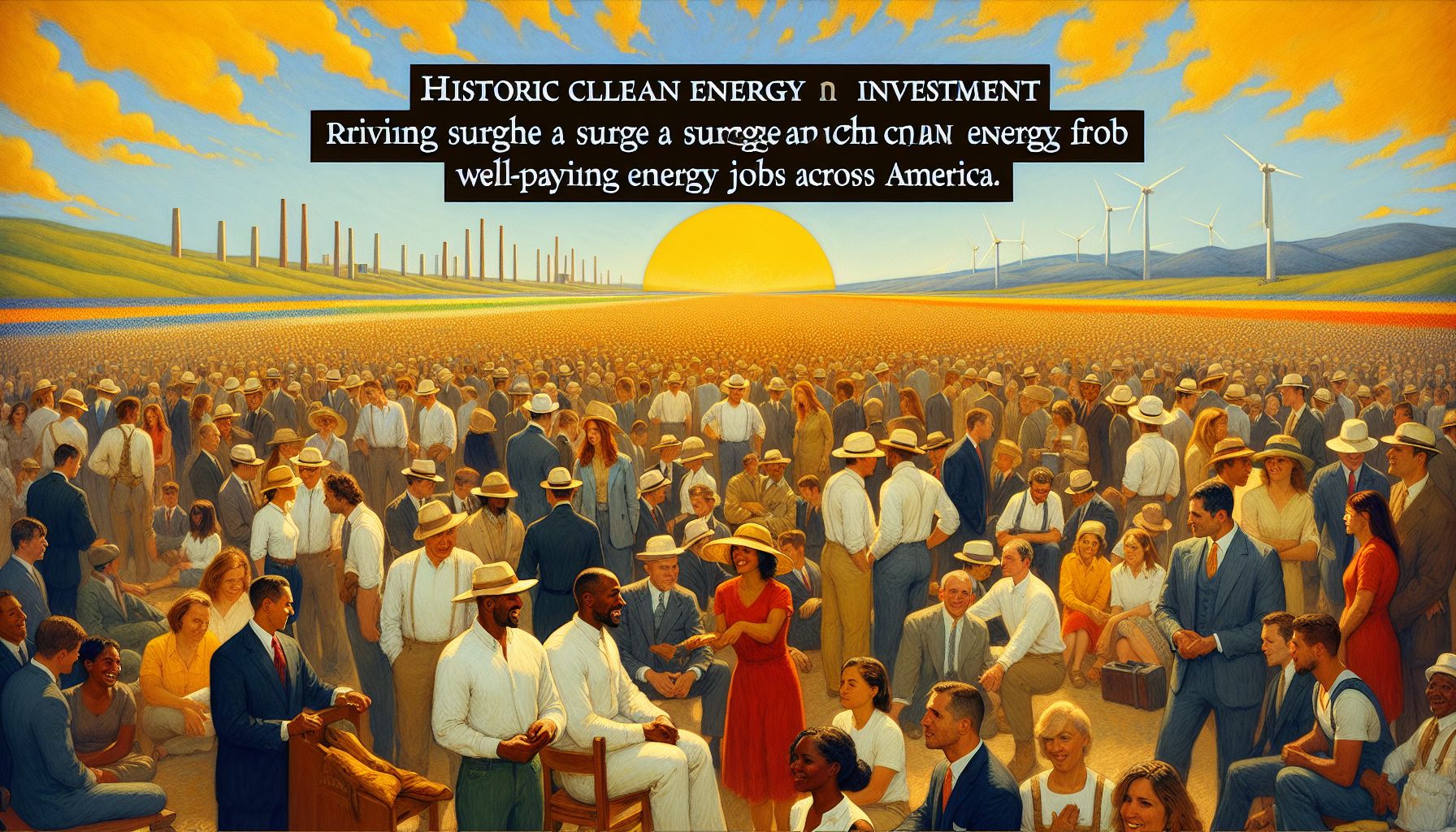Historic clean energy investment reshapes US job market

The Inflation Reduction Act drives a surge in well-paying clean energy jobs across America, leveraging significant tax incentives.
Unprecedented Economic Transformation
The Inflation Reduction Act (IRA), a cornerstone of the current administration’s climate policy, is catalyzing an economic transformation by driving a surge in well-paying clean energy jobs across America. Enhanced tax incentives under the IRA are acting as a powerful stimulus for companies that adhere to paying prevailing wages and employing registered apprentices in the construction, alteration, or repair of qualified clean energy facilities. This legislative move represents a historic commitment to not only combat climate change but also revitalize the American workforce with a focus on clean energy projects[1].
Good Jobs and Green Energy: A Dual Focus
The U.S. Department of Labor, in collaboration with other federal agencies, is helping to ensure that climate investments translate into good-paying jobs. The interactive map provided by the Department of Labor reveals a host of clean energy projects that could potentially benefit from the IRA’s tax incentives[1]. This initiative is part of a larger effort to incentivize employers to adopt worker-centric practices, thereby supporting high-quality training opportunities in the renewable energy sector.
Empowering Rural America
In a recent announcement coinciding with Earth Day 2024, Agriculture Deputy Secretary Xochitl Torres Small revealed that over 700 clean energy projects funded by the Inflation Reduction Act are set to lower energy bills, create jobs, and generate new market opportunities for U.S. farmers, ranchers, and agricultural producers. With a funding allocation of $238 million through the Rural Energy for America Program (REAP) and the Higher Blends Infrastructure Incentive Program (HBIIP), these projects will promote the expansion of domestic biofuels and renewable energy sources across rural America[2].
Spotlight on Sustainability: Cellar ‘54 LLC
One of the many beneficiaries of this initiative, Cellar ‘54 LLC in Pennsylvania, will install a solar photovoltaic system that not only saves approximately $4,500 annually but also generates over 32,000 kilowatt-hours per year. This example underscores the tangible economic benefits for small businesses in the transition to clean energy, a transition that is being accelerated by the Inflation Reduction Act’s provisions[2].
A Broader Impact on American Innovation
The broader Investing in America Agenda, which encompasses the American Rescue Plan, Bipartisan Infrastructure Law, CHIPS and Science Act, as well as the Inflation Reduction Act, is fueling a renaissance in American manufacturing and infrastructure. This agenda aims to not only bring back jobs to the U.S. but also to ensure that the jobs created are in critical future-proof sectors such as clean energy. The White House provides an interactive map that demonstrates the widespread impact of these investments, which are reaching historic levels under the current administration[3].
The Path to a Net-Zero Economy
The IRA is recognized as the most significant investment in climate and energy in U.S. history, setting the nation on a course to achieve a net-zero economy by 2050. A variety of federal and state-level incentives and programs have been established to tackle the climate crisis and advance environmental justice. These range from tax credits for energy-efficient homes to substantial rebates for electric appliances and efficiency measures, particularly focused on low-income households. The Act also includes a $100 million grant for renewable energy deployments in underserved communities, furthering the commitment to energy equity[4].

